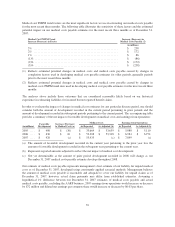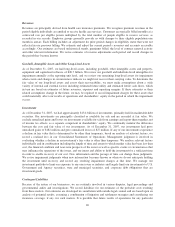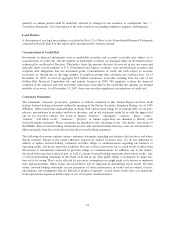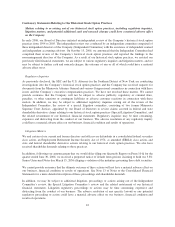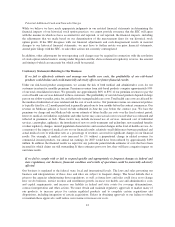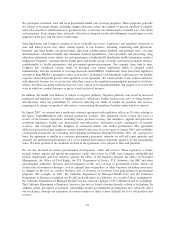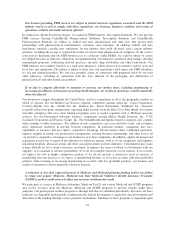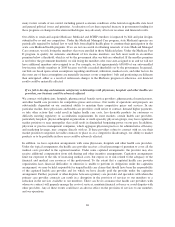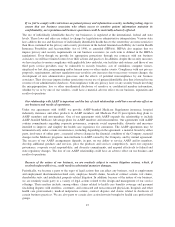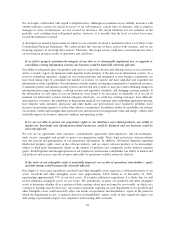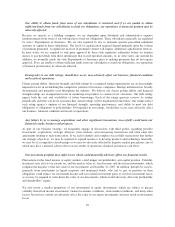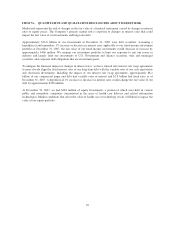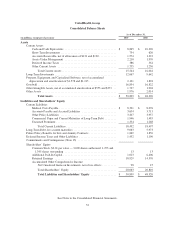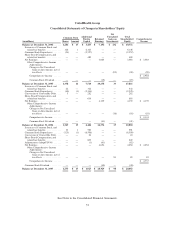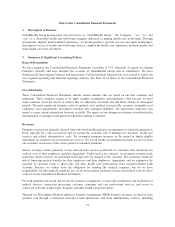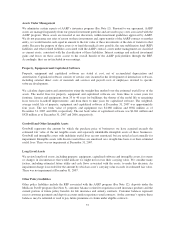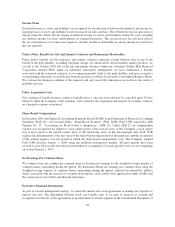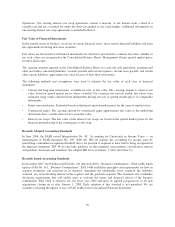United Healthcare 2007 Annual Report Download - page 51
Download and view the complete annual report
Please find page 51 of the 2007 United Healthcare annual report below. You can navigate through the pages in the report by either clicking on the pages listed below, or by using the keyword search tool below to find specific information within the annual report.Our ability to obtain funds from some of our subsidiaries is restricted and if we are unable to obtain
sufficient funds from our subsidiaries to fund our obligations, our operations or financial position may be
adversely affected.
Because we operate as a holding company, we are dependent upon dividends and administrative expense
reimbursements from some of our subsidiaries to fund our obligations. These subsidiaries generally are regulated
by states’ Departments of Insurance. We are also required by law to maintain specific prescribed minimum
amounts of capital in these subsidiaries. The levels of capitalization required depend primarily upon the volume
of premium generated. A significant increase in premium volume will require additional capitalization from us.
In most states, we are required to seek prior approval by these state regulatory authorities before we transfer
money or pay dividends from these subsidiaries that exceed specified amounts, or, in some states, any amount. In
addition, we normally notify the state Departments of Insurance prior to making payments that do not require
approval. If we are unable to obtain sufficient funds from our subsidiaries to fund our obligations, our operations
or financial position may be adversely affected.
Downgrades in our debt ratings, should they occur, may adversely affect our business, financial condition
and results of operations.
Claims paying ability, financial strength, and debt ratings by recognized rating organizations are an increasingly
important factor in establishing the competitive position of insurance companies. Ratings information is broadly
disseminated and generally used throughout the industry. We believe our claims paying ability and financial
strength ratings are an important factor in marketing our products to certain of our customers. Our debt ratings
impact both the cost and availability of future borrowings. Each of the rating agencies reviews its ratings
periodically and there can be no assurance that current ratings will be maintained in the future. Our ratings reflect
each rating agency’s opinion of our financial strength, operating performance, and ability to meet our debt
obligations or obligations to policyholders. Downgrades in our ratings, should they occur, may adversely affect
our business, financial condition and results of operations.
Any failure by us to manage acquisitions and other significant transactions successfully could harm our
financial results, business and prospects.
As part of our business strategy, we frequently engage in discussions with third parties regarding possible
investments, acquisitions, strategic alliances, joint ventures, and outsourcing transactions and often enter into
agreements relating to such transactions. If we fail to identify and complete successfully transactions that further
our strategic objectives, we may be required to expend resources to develop products and technology internally,
we may be at a competitive disadvantage or we may be adversely affected by negative market perceptions, any of
which may have a material adverse effect on our results of operations, financial position or cash flows.
Our investment portfolio may suffer losses which could materially adversely affect our financial results.
Fluctuations in the fixed income or equity markets could impair our profitability and capital position. Volatility
in interest rates affects our returns on, and the market value of, fixed income and short term investments, which
comprise the majority of the fair value of our investments at December 31, 2007. In addition, defaults by issuers,
primarily from investments in liquid corporate and municipal bonds, who fail to pay or perform on their
obligations could reduce our investment income and net realized investment gains or result in investment losses
as we may be required to write down the value of our investments, which would adversely affect our profitability
and shareholders’ equity.
We also invest a smaller proportion of our investments in equity investments, which are subject to greater
volatility than fixed income investments. General economic conditions, stock market conditions, and many other
factors beyond our control can adversely affect the value of our equity investments and may result in investment
losses.
49


